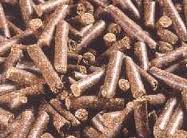Feeds for dairy cows
Feeds for dairy cows
Dairy Articles
“You cannot make a Holstein a Jersey,” teased Tom Jenkins during the Hoard’s Dairyman monthly webinar. Genetics plays a big role in components. We can fine-tune our rations to take advantage of a few scenarios, but there’s no management silver bullet to dramatically bolster components during the hotter months of the year.
(Dairy Vietnam) The Nutracor is a calcium soap of long chain fatty acids made from freshly processed fatty acid distillates of palm and reacted with calcium sources.
Mineral Nutrition: Forages are typically a variable source of minerals as they are dependent on the status of the soils. Past wet seasons may have led to higher levels of leaching, resulting in an imbalance of minerals in cow diets. Some minerals may be in short supply, while others at high levels can be antagonistic to other minerals.
(Dairy Vietnam) GLOBAL - The 2012 corn crop has been under significant stress; as a result the overall quality is a concern to livestock and poultry producers. BIOMIN is hosting an educational webinar focussed on quality findings, possible effects to livestock and poultry and solution-based strategies to cope with mycotoxins.
April 2012 marks the beginning of the final year of research being undertaken on four exciting grass and clover ‘Breeding LINK’ projects at the Institute of Biological, Environmental and Rural Sciences IBERS (Aberystwyth University). 'Breeding LINK' comprises four projects funded under the Defra Sustainable Livestock Production (SLP) LINK programme.
Microbial fermentation in the rumen dominates the nutrition of ruminant animals. Microbial ecosystems lend themselves to manipulation by external means, and it has long been clear that feed additives could be used to improve the nutrition of ruminants by manipulating ruminal fermentation. Ionophores and antibiotics have been used in the past to achieve some nutritional goals, however the recent ban of antimicrobial feed additives in the EU has lead to renewed interest in plants or their extracts as feed additives, with some success. This paper reviews recent progress in understanding how plants and their extracts may be used as rumen manipulating agents, with some benefits that were provided by ionophores and others that may improve the health of the animal and the healthiness of ruminant products.
US production of distillers’ grains (DGs), which include a range of animal feed co-products derived from corn-based dry-mill ethanol production, has quadrupled since 2004/05, paralleling the rapid growth of US ethanol production, write Linkwood Hoffman and Erik Dohlman.
Can the use of a fall cover crop be incorporated after corn silage harvest to improve land and protect it from water and wind erosion while providing a usable feed source and what tools are available to evaluate important corn silage yield traits relevant to dairy producers, explores Jennifer Bentley from the ISU Extension at the Leopold Centre.
Feeding of fat to dairy cows enables a more energy-dense feedstuff to be provided in the ration, say researchers B. Jones, A. Bowen, M. Martin, and R. Ax. This feature was taken from the proceedings of the High Plains Dairy Conference. A full link to the proceedings is provided below.
Milk composition is affected by the diet consumed by the lactating dairy cow. Alltech's programmed approach to enhancing natural antioxidant capacity involved the feeding of a low inclusion rate pack of bundled, proprietary Alltech technology.

